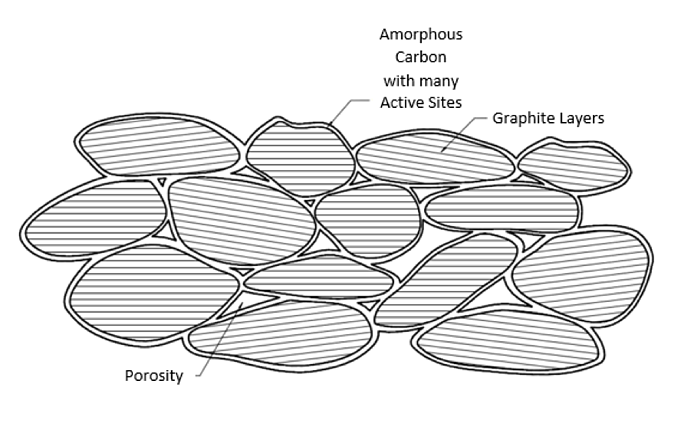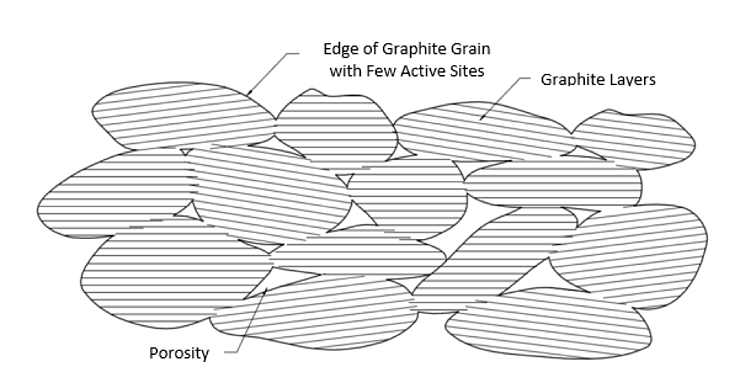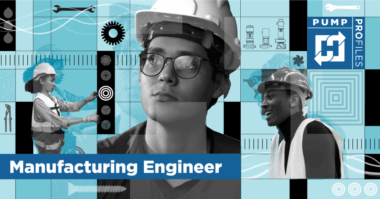As engineers push the boundaries of what’s possible, they search for adaptations of materials or new materials that can withstand increasingly extreme environments. Many new designs need materials that can endure long periods at extreme temperatures, like seals and bearings that go into rockets, turbines, and ovens that can see temperatures above 1000°F. These temperatures wreak havoc on most traditional materials, rendering them expensive to replace or dangerous to operate.
Even a more durable material like carbon graphite experiences material degradation when exposed to extreme heat. The culprit is oxidation (reaction shown below):
C + O2 + Heat = CO2
Oxidation occurs at temperatures of 650°F and above and can cause catastrophic damage to materials, and therefore any system that utilizes them.
Heat is a necessary energy catalyst for the oxidation reaction to occur. As oxidation occurs, carbon atoms in the carbon graphite matrix react with oxygen molecules, causing the material to lose mass. Over time, this measurable weight loss results in the deterioration of physical properties such as strength and durability. Graphite is a useful material for many high-temperature applications because it can resist wear and tear over time at high temperatures much more than other materials. Life-critical applications such as fire-safe mechanical valves rely on graphite as a result. In applications such as this, extensive testing helps prevent failure and ensures that the materials used in these high temperatures will avoid oxidation and property degradation.
When conducting oxidation tests, engineers typically use a 5% weight loss as the benchmark for the point at which oxidation has diminished the carbon properties to below the minimum specifications for a durable material. Depending on the material grade, temperature, and the amount of oxygen present in the application, a part may never reach this point; or it may occur within years, or mere hours.
Less Carbon Exposure, Less Oxidation
The main method used to combat the occurrence of oxidation is to reduce the number of active sites at which carbon atoms are available to react with oxygen. Increasing the amount of graphite and decreasing the amount of carbon through graphitization significantly improves the material’s oxidation resistance for applications where materials are faced with high-intensity heat, such as conveyor bearings in industrial ovens, or air bleed valves in aircraft engines.
In a typical carbon graphite component, grains of graphite are enclosed within a carbonaceous matrix. The graphite grains have a layered structure with relatively few active sites available for oxidation to occur. The carbon surrounding these grains, however, has a less ordered, amorphous structure which has many more active sites exposed to oxygen.
In graphitization, carbon is converted to graphite through a special process introducing extreme heat over time, to over 4000°F. The figures below show how graphitizing a part can reduce the amount of carbon exposed to oxygen and decrease the rate of oxidation at high temperatures:

Visual Representation of Carbon Graphite on a Microscopic Level: The active sites on the carbon matrix get attacked by O2 at temperatures of 650°F or greater.

Visual Representation of Graphite on a Microscopic Level: Graphite has fewer active sites at which oxygen can “pick off” carbons and thus, the oxidation rate is greatly reduced.
Room For Improvement: Counteract Porosity With Impregnation
Although graphitization has considerable effects when it comes to enhancing oxidation resistance, oxidation rates can be even further reduced through impregnating the graphite’s porosity with an oxidation inhibitor. The oxidation inhibitor chemically bonds to the active sites of the graphite matrix and acts as a barrier between the carbon and oxygen atoms.
When impregnated with an oxidation inhibitor, graphite shows dramatically improved oxidation resistance, to the point where the material can withstand excursions to 1000°F and higher. Processes like Molten Vacuum Pressure Impregnation can ultimately provide a number of material benefits across the board, including enhanced the strength and stiffness, improved thermal properties, increased current carrying capacity, and improved lubricity. For seals and bearings in ovens, engines, and turbines where hot, high-pressure gases are present, these properties are crucial.
On top of that, the fact that graphite retains its self-lubricating properties at these temperature extremes makes it unique. In high-temperature applications where any type of “rubbing” occurs, no other materials outperform graphite.

Visual Representation of Graphite Impregnated with Oxidation Inhibitor on a Microscopic Level: The conversion of carbon to graphite through graphitization yields optimal oxidation resistance.
Carbon graphite oxidation resistance research and development has profoundly improved the material that is available to numerous innovative industries. Being able to overcome previous limitations has accelerated the rapid development of the carbon graphite industry in recent years, in turn bolstering other industries that rely on strong materials in extreme environments. The new, stronger, and more durable graphite material has enabled engineers to push limits and exceed restrictions which have previously hindered advances. In the aerospace industry, the ability to supercharge graphite’s extreme capabilities has proven to enhance aircraft service life, improve fuel efficiency, decrease the overall weight, and increase temperature limitations.
With the continued advancement of these materials, other industries that drive production can benefit from new applications and innovation using these reliably extreme materials. Materials make all the difference when advanced processes are at stake. Metcar takes special care to produce materials that are high performance and serve the industries that benefit from specialized and customized solutions.
Read High-Performance Materials For 7 High-Temperature Applications to learn more about the applications Metcar’s Carbon Graphite materials are used.




